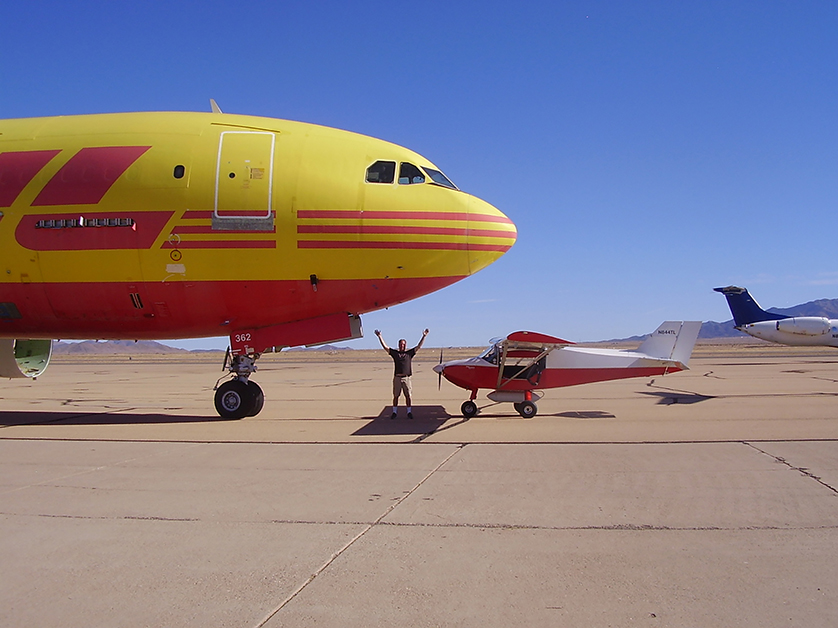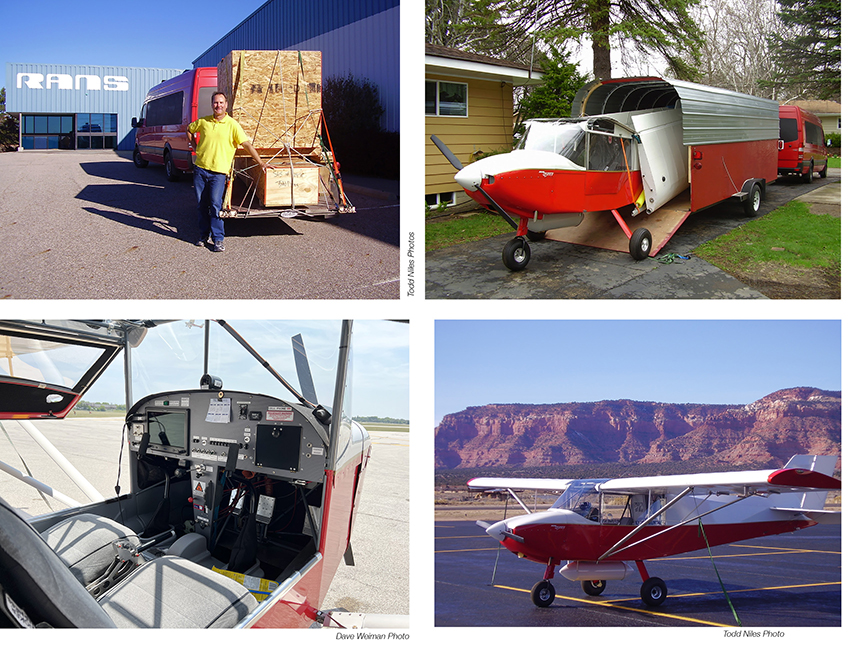by Dave Weiman
Published in Midwest Flyer Magazine August/September 2023 Digital Issue

Winning this year’s “Flour Bombing Contest,” June 3, 2023, at Milwaukee Lawrence J Timmerman Airport (KMWC), was Todd Niles of Somers, Wisconsin, flying his homebuilt aircraft, a 2018 RANS S6S Coyote II.
Niles is a retired civil engineer and mutual fund investor. With an early start investing, advice from fellow engineers, and lots of patience, along with several home and land deals, he was able to retire at age 45. He’s now 55. Winning the $200.00 prize gift certificate at the Flour Bombing Contest was a nice bonus!
Niles built his Coyote II in his basement and garage. “I did everything except wiring the avionics,” said Niles, who credits Steinair, Inc. of Faribault, Minnesota, for wiring the Garmin G3X panel and two-axis autopilot. The wings and everything except the fuselage were completed in his basement. The fuselage was built in his garage since it was too large to get out the back door of his house.

The Coyote II is equipped with an 80 hp Rotax 912 engine, burning 87 octane auto fuel. “Thanks to the 10 percent ethanol, I never have any nuisance water in my fuel tanks.”
Since the Coyote II is an experimental aircraft, Niles can maintain the aircraft himself, so that helps to keep costs down.
Niles escapes the Wisconsin winters each year by traveling to Texas, New Mexico, Arizona, Nevada, Utah, or California, and tows his airplane in a homemade converted boat trailer behind his Sprinter van. His van was designed to look like a cargo van. It has a bathroom, shower, kitchen, recliner, 12-volt DC color TV, bed, and propane furnace.
“I’m very comfortable in the Sprinter, for up to two months. It is a stealth motorhome,” says Niles.
Niles prefers to park his van at small, rural airports, near large cities, so he can get over-the-air television reception, as local television weather reports are critical to him. He doesn’t feel that aviation weather and FAA’s 1800wxbrief are enough.
“Getting the opinion of the experienced local meteorologist is critical in an area I’ve never flown before,” he says. “They have saved my bacon a few times.”
Niles will stay at one airport for three to four weeks as a “tourist pilot” with permission from the airport manager. “So far, they’ve let me park my van and stay right at their airport, for free!
“I don’t need any electrical plugins, water, or sewer. I just need a quiet place to park. In fact, many airports like the free 24-hour security my being there provides.”
On nice days, Niles flys and explores the countryside. On other days, he drives his van to some local tourist attractions, and hikes, bikes, and researches the area for interesting destinations. “The locals are a great source of information, and they keep me out of trouble.”
Niles uses a “Critical Judd” folding bicycle that fits in his Coyote II. So, when he flys to some other airport, he can pedal off to some Indian ruins or a restaurant or wherever.
When choosing a folding bicycle for your airplane, Niles recommends a bicycle that does not have cables. That way it disassembles easily and can easily be stowed in your airplane.
“There is usually a grass airstrip or larger airport near every bicycle trail,” says Niles. For long trips, he brings a tent and sleeping bag and sleeps under the wing. He can often complete two bicycle trails per trip!
“I’ve ridden all of the bicycle trails in Wisconsin, Illinois, and Indiana,” says Niles. “Now I’m working on all the trails in Iowa.”
It takes about 1 1/2 hours to fold or unfold the Coyote II aircraft. Niles will find a helper at the airport when he unfolds the wings. “There’s always somebody around the airport who can help me with the heavy wings, and I make a new friend.” All fuel is drained out of the wing-tanks before folding the wings.
The 10-gallon “bomb tank,” as Niles calls it, is located on the belly of his aircraft, and he designed it himself. The tank consists of two sheet metal cooking pots Niles purchased at Big Lots department store, aluminum to wrap the tank, and lots of pop rivets. He sealed the tank with 3M fuel tank sealant from Spruce and Specialty. He uses a used Cadillac fuel pump that can pump fuel at 1 gallon per minute up to the wing tanks. In 10 minutes, the bomb tank is empty!
“It sure is nice to refuel in flight and have full wing tanks for hours at 10,000 feet,” says Niles. The Rotax 912 engine burns 3.3 gallons per hour. The bomb tank alone adds three hours to his total flight time. The Coyote II can fly for 7 hours and still have a VFR reserve upon landing.
Niles’ aircraft is equipped with a BRS parachute, just in case the engine would fail. “It’s all tall trees, canyons, steep hills, and rocky terrain out west,” he said, so having the parachute is a great safety feature.
The airplane and homemade trailer cost Niles a total of about $100,000 and 3 years of his time. He figures it costs him about $13.00 an hour to fly his airplane, making it very affordable! “I fly whenever I want, since the cost is so low.”
Niles, who is a “Sport Pilot,” wonders why more pilots are not “tourist pilots” like him. “I’m having the time of my life,” and so can you!